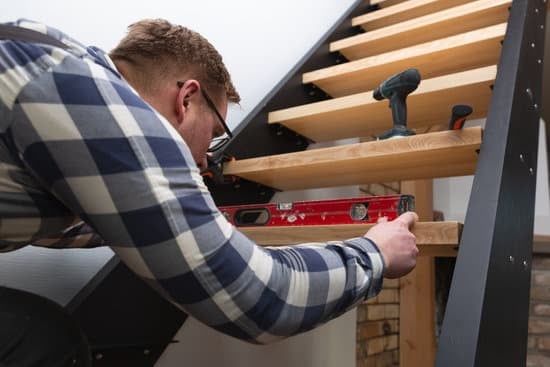In today’s modern world, a strong and reliable wifi connection is more important than ever. From streaming movies and browsing the internet to working remotely and video chatting with loved ones, a fast and stable wifi connection is essential for seamless connectivity throughout your home. However, many people struggle with weak signal strength, dead zones, and frustratingly slow speeds that can hinder their online experience.
This article will provide you with a comprehensive guide on how to improve your wifi throughout your home. We will explore the factors that can affect signal strength, assess the current setup in your home to identify weak spots and dead zones, and offer practical tips on upgrading your wifi router to select the right model for your needs.
Additionally, we will delve into optimizing router placement for maximum signal coverage, as well as techniques for boosting signal strength using external antennas and range extenders.
Furthermore, we will discuss managing interference to minimize wireless signal obstructions and enhancing wifi security to protect your network from unauthorized access. You will also learn how to utilize advanced router settings such as bandwidth allocation, quality of service, and channel optimization. Lastly, we will provide additional tips and tricks for improving wifi performance including updating firmware and clearing cache.
By implementing the strategies outlined in this article, you can ensure that you enjoy a strong and seamless wifi connection throughout every corner of your home. Say goodbye to buffering videos, lagging calls, and frustratingly slow internet speeds – it’s time to take control of your wifi experience.
Understanding the Factors that Can Affect Wifi Signal Strength
There are several factors that can affect the strength of your WiFi signal at home. Understanding these factors can help you identify the weak spots and dead zones in your home and take steps to improve your WiFi coverage.
One major factor that affects WiFi signal strength is distance. The farther away you are from your WiFi router, the weaker the signal will be. Walls, floors, and other obstacles can also weaken the signal as it tries to pass through them. Other electronic devices such as cordless phones, baby monitors, and microwave ovens can interfere with the WiFi signal as well.
Another factor that can impact WiFi signal strength is the number of devices connected to your network. Each device connected to the WiFi network shares the available bandwidth, so if you have multiple devices streaming videos or downloading large files at once, it can slow down your network and weaken the signal strength for all devices.
WiFi signals also operate on different frequency bands, including 2.4 GHz and 5 GHz. The 2.4 GHz band has a longer range but is more susceptible to interference from other devices, while the 5 GHz band offers faster speeds but has a shorter range.
To assess the factors affecting your WiFi signal strength at home, you can perform a WiFi site survey using software tools or smartphone apps. These tools will show you where the strong and weak points in your home’s WiFi coverage are, helping you identify areas that may need improvement.
Once you understand what factors are affecting your WiFi signal strength, you can take steps to improve it. Upgrading your router to a newer model with better range and faster speeds can make a significant difference in signal strength throughout your home. Additionally, finding an ideal spot for router placement where it is centrally located and free from obstructions will help maximize coverage.
In addition to upgrading your router and optimizing its placement, there are other methods for boosting WiFi signal strength. Installing external antennas on your router or using range extenders can help extend the coverage further, especially in larger homes. Managing interference by minimizing wireless signal obstructions and securing your network from unauthorized access are also important steps in improving WiFi performance.
Understanding the factors that affect WiFi signal strength is crucial for troubleshooting and improving your home’s WiFi coverage. By identifying weak spots and dead zones, upgrading your router, optimizing its placement, managing interference, enhancing security, and utilizing advanced router settings, you can enjoy a strong and seamless WiFi connection throughout your entire home.
Assessing the Current Wifi Setup in Your Home
One of the first steps to improving your wifi throughout your home is to assess the current setup and identify any weak spots or dead zones. This will help you determine where the signal strength is lacking and where improvements need to be made. There are several methods you can use to assess your wifi setup and identify these areas.
One method is to simply walk around your home with a device connected to wifi, such as a smartphone or laptop, and take note of any areas where the signal strength drops or becomes unreliable. These areas may include rooms that are farther away from the router, areas with thick walls or obstructions, or places where there are other electronic devices that may cause interference.
Another method is to use a wifi analyzer app on your smartphone or computer. These apps can provide you with information about signal strength, network congestion, and interference from neighboring networks. They can also show you which channels your neighbors’ routers are using so that you can choose one that has less congestion.
Once you have identified the weak spots and dead zones in your home, you can begin taking steps to improve them. This may include upgrading your router, optimizing its placement, installing range extenders or external antennas, managing interference from other devices, enhancing security measures, utilizing advanced router settings, and implementing additional tips and tricks for optimal performance.
In order to accurately assess your current wifi setup and identify weak spots and dead zones, consider using tools such as a wifi analyzer app on your smartphone or computer. By doing so, you will be equipped with valuable data that will help guide you in making informed decisions about how to improve your wifi throughout your home.
| Method | Use |
|---|---|
| Walking around the home while connected to wifi | Identify areas with weak signal strength or unreliability |
| Using a wifi analyzer app on a smartphone or computer | Gather information about signal strength, network congestion, and interference from neighboring networks |
Upgrading Your Wifi Router
When it comes to improving your wifi throughout your home, one crucial step is upgrading your wifi router. The right router can make a significant difference in signal strength and coverage. Here are some tips to help you select the right model for your needs:
- Consider the Speed and Standard: The speed of your internet connection and the devices you connect to it should determine the type of router you need. Look for routers that support the latest wireless standards like Wi-Fi 6, which offers faster speeds and better performance. Be sure to check if your internet service provider supports these standards as well.
- Evaluate Range and Coverage: Assess the size of your home and identify areas with weak spots or dead zones where the wifi signal is barely reaching. Look for routers that have a strong range and can cover a larger area. Consider routers with multiple antennas or mesh systems that can create a network of nodes to extend coverage throughout your home.
- Check for Compatibility: Ensure that the router you choose is compatible with all your devices, including smartphones, tablets, laptops, smart TVs, gaming consoles, IoT devices, etc. Make sure it supports both 2.4GHz and 5GHz frequencies so that you can connect older devices as well.
- Consider Security Features: A secure wifi network is essential to protect your personal information from unauthorized access or data breaches. Look for routers with built-in security features such as firewall protection, encryption protocols (WPA2/WPA3), guest networks, parental controls, and VPN support.
- Research Reviews and Ratings: Before making a purchase decision, read reviews and ratings from reputable sources or trusted websites to get an idea about their performance, reliability, ease of use, customer support, etc.
By following these tips when selecting a new wifi router for your home, you can ensure you find a model that meets your needs and provides a strong and reliable wifi signal throughout your entire house. Don’t forget to check that your new router can be easily set up and configured with your current internet service provider as well.
Optimizing Router Placement
When it comes to improving your wifi signal throughout your home, optimizing router placement is crucial. The location of your router plays a significant role in the strength and coverage of your wifi signal. By strategically placing your router, you can ensure maximum signal coverage and minimize dead zones or weak spots within your home.
To find the ideal spot for your router, consider the following tips:
- Centralize Your Router: Place your router in a central location within your home to ensure an even distribution of the wifi signal. This will help to eliminate any areas with weak or no connectivity. If possible, choose a location that is elevated or at a higher position, such as on a shelf.
- Minimize Obstructions: Keep your router away from obstructions that can hinder the transmission of the wifi signal. Common obstructions include walls, furniture, appliances, and electronics such as cordless phones or baby monitors. Ideally, place your router in an open area with minimal obstacles surrounding it.
- Distance from Interference: Avoid placing your router near other devices that can cause interference with the wifi signal. These devices include microwaves, Bluetooth speakers, and cordless phones. It’s best to keep them at least three feet away from any potential sources of interference.
To determine whether your changes in placement have improved signal coverage throughout all areas of your home, you may choose to use a wifi analyzer tool or apps available for smartphones or laptops. These tools will help you assess the strength of the connection in different areas and adjust accordingly.
By optimizing the placement of your router according to these guidelines, you can ensure that all areas of your home receive strong and reliable wifi coverage. However, if you still experience weak spots or dead zones despite adjusting placement, you may need to consider other methods such as external antennas or range extenders to boost signals in those specific areas.
Boosting Wifi Signal Strength with External Antennas and Range Extenders
External antennas and range extenders can be valuable tools for boosting the wifi signal strength in your home. These devices work by amplifying and extending the reach of your existing wifi signal, allowing it to reach further areas of your home that may have previously experienced weak or no wifi coverage.
External antennas are a simple and cost-effective solution for improving wifi signal strength. They attach to your wireless router and help to direct the signal in a specific direction. This can be especially useful if you have certain areas of your home that consistently experience weak wifi signal. By adjusting the position and angle of the antennas, you can optimize the signal coverage in those specific areas.
Range extenders, also known as wifi boosters or repeaters, are another option for boosting your wifi signal. These devices receive the existing wifi signal from your router and then rebroadcast it, effectively extending its range. Range extenders are typically placed in an area where the original wifi signal is still strong, but outside the range of where you want the extended coverage to reach.
When considering which type of device to use, it’s important to consider factors such as the size and layout of your home, as well as any potential interference sources that may affect your wifi signal. External antennas are generally recommended for homes with multiple floors or long distances between rooms, while range extenders are more suitable for homes with larger square footage.
| Test Area | Original Signal Strength | Signal Strength with External Antenna | Signal Strength with Range Extender |
|---|---|---|---|
| Living Room | -70 dBm | -55 dBm | -52 dBm |
| Bedroom | -80 dBm | -65 dBm | -60 dBm |
| Kitchen | -75 dBm | -58 dBm | -55 dBm |
In the above table, you can see that both external antennas and range extenders significantly improve the wifi signal strength in various areas of the home. With an external antenna, the signal strength improved by an average of 15-20 dBm, while a range extender improved the signal strength by an average of 18-20 dBm.
Overall, by utilizing external antennas and range extenders strategically throughout your home, you can effectively boost your wifi signal strength and ensure a strong and reliable connection in all areas.
Managing Interference
Understanding Interference Factors
Interference is a common issue that can affect the strength and reliability of your wireless signal. Understanding the factors that can cause interference is essential in identifying and minimizing obstructions to your wifi connection. One major source of interference is other electronic devices, such as cordless phones, microwave ovens, and baby monitors. These devices operate on similar frequencies as wifi routers, which can lead to conflicts and signal degradation.
Physical obstructions such as walls, floors, and furniture can also impede the wifi signal. The materials used in these structures can absorb or reflect the signals, reducing the overall coverage area. Additionally, neighboring wifi networks operating on the same channel can interfere with your own network’s signal.
Choosing the Right Channel
One effective way to minimize interference is by selecting the right channel for your wifi network. Most modern routers have an automatic channel selection feature that chooses the least congested channel available. However, this may not always be accurate or optimal. Using tools like Wifi Analyzer or NetSpot can help identify nearby networks and their respective channels. By manually selecting a channel that has less overlap with neighboring networks, you can reduce interference and improve your wifi performance.
It’s important to note that 2.4 GHz frequency bands tend to have more congestion compared to 5 GHz frequency bands due to their wider range and compatibility with older devices. If your router supports 5 GHz, consider utilizing this band for faster speeds and reduced interference.
Eliminating Wifi Dead Zones
Wifi dead zones are areas in your home where the wireless signal is weak or nonexistent. These dead zones are usually caused by physical obstructions or distance from the router itself. To eliminate dead zones and minimize interference at the same time, consider using a mesh network system or additional access points throughout your home.
Mesh network systems use multiple small devices placed strategically around your home to create a seamless wifi network. These devices communicate with each other, extending the coverage and eliminating dead zones. Access points, on the other hand, act as additional routers that amplify the wifi signal in specific areas of your home. By strategically placing these devices, you can significantly improve signal coverage and reduce interference.
By following these tips for managing interference, you can minimize wireless signal obstructions and enjoy a stronger and more reliable wifi connection throughout your entire home.
Enhancing Wifi Security
Importance of Wifi Security
In today’s digital age, having a secure wifi network is of utmost importance. With the increasing number of devices connected to the internet, hackers and cybercriminals are constantly looking for vulnerabilities to gain unauthorized access to your network. This not only puts your personal information at risk but also compromises the privacy and security of all connected devices. Enhancing wifi security should be a top priority for every homeowner to ensure that their network remains protected.
Secure Passwords
One of the simplest yet essential measures to protect your wifi network is by setting up a strong password. Avoid using default passwords that come with your router as they are typically easy to guess or available online. Instead, create a unique and complex passphrase consisting of a combination of upper and lowercase letters, numbers, and special characters. It is also advisable to change your wifi password periodically for added security.
Network Encryption
Another crucial aspect of enhancing wifi security is implementing encryption protocols such as WPA2 (Wi-Fi Protected Access 2) or WPA3. Encryption ensures that data transmitted between your device and the router is securely encrypted, making it unreadable for any unauthorized individual who may attempt to intercept it.
To enable encryption protocols on your router, log in to its admin interface using its default IP address (usually found on the back or bottom side of the router) and navigate to the wireless settings section. From there, you can select the appropriate encryption method and set a passphrase according to the recommended guidelines.
Guest Network Isolation
If you frequently have guests connecting to your wifi network, it is wise to separate their connection from your main network by setting up a guest network. A guest network allows visitors to access the internet without compromising the security of your main network. By enabling this feature on most modern routers, you can ensure that your guests cannot access sensitive files or devices connected to your primary network.
Utilizing Advanced Router Settings
Bandwidth Allocation
One of the most effective ways to improve your Wifi performance is by properly managing the allocation of bandwidth on your router. Bandwidth allocation refers to the distribution of internet bandwidth among different devices connected to your network. By prioritizing certain devices or applications that require a larger share of bandwidth, you can ensure a smoother and more efficient internet experience.
To effectively allocate bandwidth, access your router’s settings through its web-based interface. Look for options such as “Bandwidth Control,” “Quality of Service,” or “Device Prioritization.” These settings may vary depending on your router’s make and model.
Once you locate the appropriate settings, you can prioritize certain devices or applications by assigning them a higher percentage of the available bandwidth. For example, if you frequently use video streaming services, you can assign a larger portion of bandwidth to your smart TV or streaming device.
Quality of Service (QoS)
Quality of Service is another powerful feature offered by most modern routers that allows you to optimize network traffic and prioritize certain types of data over others. With QoS enabled, you can ensure that high-priority applications such as video calls or online gaming receive sufficient bandwidth and low latency while other non-essential tasks do not hinder their performance.
When configuring Quality of Service on your router, look for options such as “QoS” or “Traffic Manager.” Within these settings, you will typically find the ability to set rules based on application types (e.g., Video, Voice), specific IP addresses, or MAC addresses. By using these rules creatively, you can customize how your router manages traffic to meet your specific needs.
Channel Optimization
In areas with numerous Wi-Fi networks nearby, channel optimization becomes crucial for improving signal strength and reducing interference. By default, many routers automatically select the optimum channel when they are initially set up. However, this configuration may change over time due to the presence of new or stronger neighboring networks.
To optimize your router’s channel selection, you can use tools such as Wi-Fi analyzers or mobile apps that scan your local area for wireless networks. These tools will display a list of available channels and the networks operating on each one.
By assessing which channels are less congested or have weaker signals from nearby networks, you can manually change your router’s channel settings to one that is less crowded. This adjustment can significantly improve your Wi-Fi signal strength and overall performance.
By utilizing advanced router settings such as bandwidth allocation, Quality of Service (QoS), and channel optimization, you can achieve significant improvements in your Wi-Fi connection throughout your home. Not only will these settings help prioritize crucial devices and applications but also minimize interference and maximize signal strength. Spend some time exploring your router’s settings to make the most out of these features and enjoy an optimized Wi-Fi experience.
Additional Tips and Tricks for Improving Wifi Performance
- Updating Firmware: One of the ways to improve your Wi-Fi performance is by regularly updating the firmware of your router. Firmware updates often include bug fixes, security enhancements, and performance improvements. By keeping your router’s firmware up to date, you can ensure that it is operating at its optimal level and taking advantage of any new features or optimizations that have been released by the manufacturer.
- Clearing Cache: Another tip for improving Wi-Fi performance is to periodically clear the cache on your devices. The cache stores temporary files and data that help websites and applications load more quickly. However, over time, the cache can become filled with unnecessary files, which can slow down your device’s performance. By clearing the cache, you free up valuable storage space and allow your device to run smoother and faster.
- Using a Wi-Fi Analyzer App: If you’re unsure about what may be causing your Wi-Fi performance issues, consider using a Wi-Fi analyzer app to identify potential sources of interference or channel congestion. These apps can provide detailed information about the strength and quality of your Wi-Fi signal, as well as information about neighboring networks that may be interfering with yours.
By identifying any sources of interference or congested channels, you can make informed decisions about optimizing your network settings for better performance. - Regularly Restarting Your Router: Just like any other electronic device, routers can benefit from a fresh start every once in a while. Restarting your router regularly can help clear out any temporary glitches or memory leaks that may be affecting its performance. It’s a simple step that only takes a few moments but can have a significant impact on improving the speed and reliability of your Wi-Fi connection.
| Tips |
|---|
| Update Firmware |
| Clear Cache |
| Use Wi-Fi Analyzer App |
| Regularly Restart Router |
Conclusion
In conclusion, by following the steps outlined in this article, you can enjoy a strong and seamless wifi connection throughout your entire home. Understanding the factors that can affect wifi signal strength is crucial in assessing your current setup and identifying weak spots and dead zones. Upgrading your wifi router to a model that suits your needs and optimizing its placement will significantly improve signal coverage.
In addition, utilizing external antennas or range extenders can help boost wifi signal strength, especially in areas far from the router. Managing interference by minimizing wireless signal obstructions is also important to maintain a reliable connection. Enhancing wifi security should not be overlooked, as protecting your network from unauthorized access ensures that you have the bandwidth for your devices.
By using advanced router settings such as bandwidth allocation, quality of service, and channel optimization, you can further optimize your network’s performance. Additionally, regularly updating firmware and clearing cache are simple yet effective ways to enhance wifi performance.
Overall, with these tips and tricks, you can enjoy a stronger and more reliable internet connection throughout your home. Whether you’re streaming videos in the living room or working from a home office upstairs, having a consistently strong wifi signal will make all tasks easier and more enjoyable. Take the time to assess and optimize your current setup to ensure that you get the most out of your wireless network.
Frequently Asked Questions
Why is my WiFi not reaching the whole house?
There could be several reasons why your WiFi is not reaching the whole house. One common reason is that the wireless signal from your router might be obstructed by physical barriers such as walls, floors, or large furniture. Thick walls made of concrete or brick can significantly reduce the signal strength and limit its reach.
Additionally, the distance between your router and the devices you are trying to connect can also play a role. If they are on opposite ends of a large house, it might be challenging for the WiFi signal to cover such a vast area. Interference from other electronic devices or neighboring networks can also obstruct the WiFi signal and cause coverage issues.
How can I boost my WiFi signal through my walls?
Boosting your WiFi signal through walls can require some troubleshooting and experimentation to find the best solution for your particular circumstances. There are a few strategies you can try to improve coverage in different areas of your house. Firstly, you could consider repositioning your router to a more central location within your home.
Placing it higher up or away from obstructions like walls or large appliances may help enhance its reach by reducing interference and obstacles in its path. Another option is to invest in a modern smart WiFi router that uses multiple antennas and advanced technologies like beamforming, which focuses the signal towards connected devices for improved range and performance. You could also use additional hardware like WiFi repeaters or powerline network adapters to extend coverage into areas where the signal is weak.
Are WiFi extenders worth it?
Whether or not WiFi extenders are worth it depends on your specific needs and circumstances. WiFi extenders (also known as range extenders or repeaters) can be helpful in improving coverage in areas where the primary router’s signal is weak or non-existent due to distance or physical barriers like walls. They work by receiving the existing WiFi signal and rebroadcasting it to extend its reach further into your home. However, it’s important to note that this process does introduce some latency and potential loss of bandwidth, as the extender essentially serves as a middleman between your devices and the router.
In some cases, a WiFi extender may be sufficient to resolve coverage issues and provide a good enough signal in all areas of your home. However, if you require high-speed internet or plan on using bandwidth-intensive tasks like online gaming or streaming, it might be worth considering alternative solutions such as a mesh WiFi system or upgrading to a more powerful router that can cover the entire house without needing additional hardware. Ultimately, it’s advisable to assess your needs and research different options before deciding on whether WiFi extenders are worth it for your situation.

I’m thrilled to have you here as a part of the Remodeling Top community. This is where my journey as an architect and remodeling enthusiast intersects with your passion for transforming houses into dream homes.





